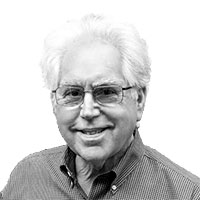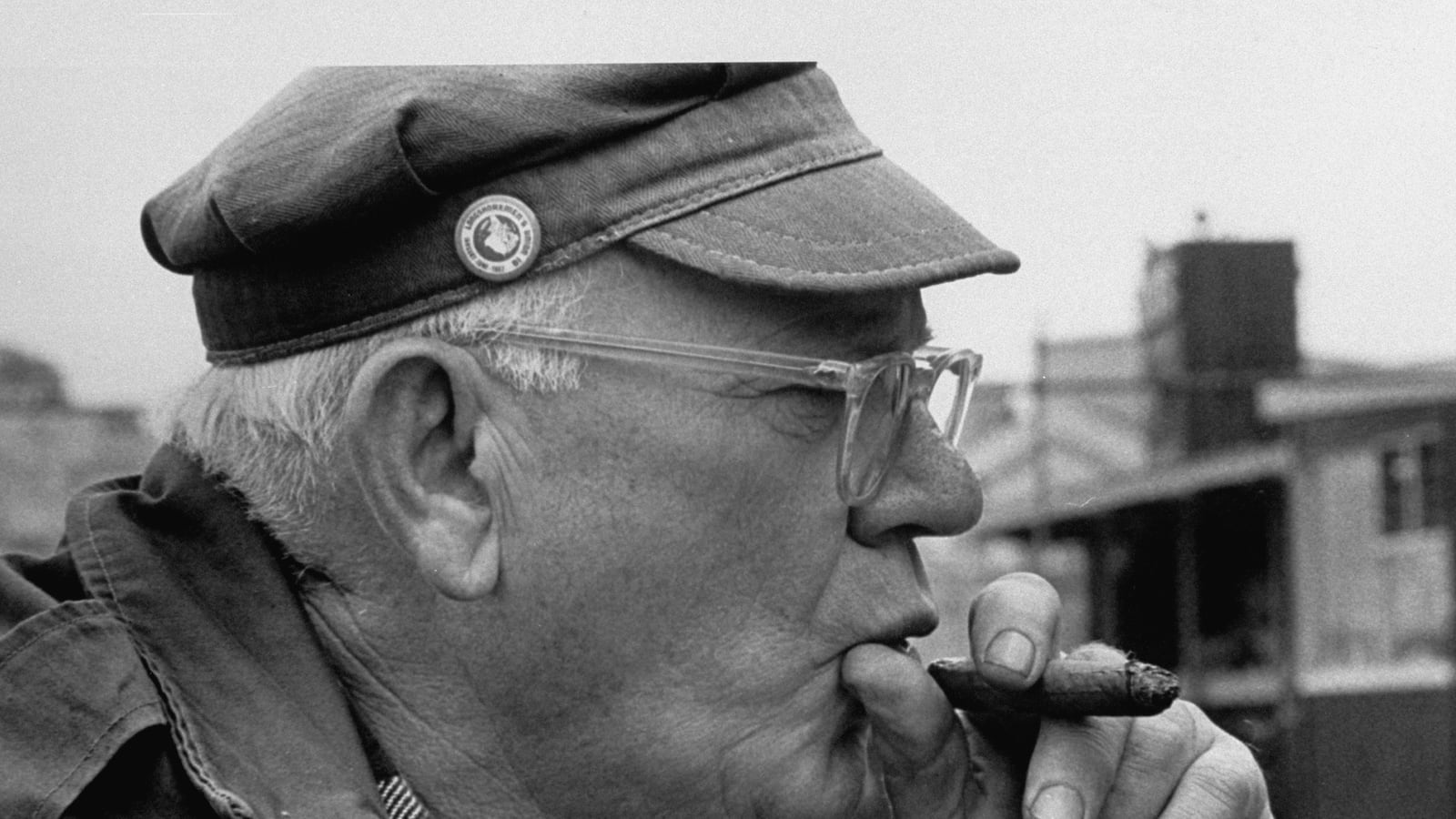Whether or not Donald Trump knows it, he’s running his presidential campaign out of Eric Hoffer’s playbook.
That would be The True Believer, published 65 years ago this spring, a book about mass movements. Hoffer’s big insight was that the followers of Nazism and Communism were essentially the same sort of true believers, the most zealous acolytes of religious, nationalist, and other mass movements throughout history. In 1951, it was stunning to Americans to be told that ultra-right-wing Nazis and ultra-left-wing Communists—their recent enemies of World War II and current enemies in the Cold War—were, according to Hoffer, cut from the same cloth.
“All mass movements,” he explained, “irrespective of the doctrine they preach and the program they project, breed fanaticism, enthusiasm, fervent hope, hatred, and intolerance.”
Hatred and hope were the most important lures, Hoffer contended, hatred much more than hope: “Hatred is the most accessible and comprehensive of all the unifying agents. Mass movements can rise and spread without belief in a God, but never without belief in a devil.”

Trump’s followers have responded most enthusiastically to the candidate’s diatribes against such devils as Mexicans and other “illegal immigrants,” Muslims of any stripe, unattractive or pushy women, clueless policy-makers, “loser” opposing candidates, and reporters who ask him other than softball questions.
The pollsters tell us that Trump’s followers share a decided affinity for authoritarianism, as well as beliefs that government causes more problems than it solves and that immigrants (and people with darker skins, and women) have stolen their jobs and their futures.
More: Trumpsters have little regard for facts that contradict their stances. Hoffer could have predicted this. “It is the true believer’s ability to ‘shut his eyes and stop his ears’ to facts that do not deserve to be either seen or heard which is the source of his unequaled fortitude and constancy. He cannot be frightened by danger nor disheartened by obstacle nor baffled by contradictions because he denies their existence.”
Hoffer described in detail who the true believers were: the frustrated, the disaffected, the dissatisfied with the status quo, those who put their faith in a leader promising simple yet radical solutions to their and society’s problems. “We join a mass movement,” Hoffer wrote, “to escape individual responsibility, or, in the words of the young Nazi, ‘to be free from freedom.’
“Faith in a holy cause is to a considerable extent a substitute for the loss of faith in ourselves.
“All mass movements deprecate the present,” wrote Hoffer, “and there is no more potent dwarfing of the present than by viewing it as a mere link between a glorious past and a glorious future.” That’s what Trump is doing when he vows to “make America great again”—celebrating what was and will be, while denigrating what is.
Trumpsters are predominantly white, native-born American males who do not have college degrees, and are economically in the lower middle class rather than among the very poorest. Actually, in these ways they are more like Eric Hoffer than many other Americans. In a 1964 article, Hoffer identified himself and his fellow longshoremen as white men from poor backgrounds, with little education and no skills except for their willingness to do backbreaking manual labor, who “do not feel that the world owes us anything, or that we owe anybody—white, black, or yellow—a damn thing.”

Hoffer was the only child of Alsatian immigrants, born in the Bronx around the turn of the 20th century—sometimes he said 1898, at others, 1902—who grew up poor. When he was 5 he and his mother fell down a flight of stairs; she died and he went blind. His blindness prevented him from going to school, and upon regaining his sight at 15 he continued studying on his own until he was 18, when his father died. Using a small death award from his father’s union, Hoffer traveled to Los Angeles and in the 1920s became a day-worker and Skid Row denizen—reading voraciously in libraries between gigs—in the 1930s an itinerant agricultural field hand, and in 1943 a unionized San Francisco dockworker, a position he retained even after becoming a best-selling author, and until he reached mandatory retirement age in 1967.
He initially took that job on the docks to have more stability to write, but retained the wariness of the itinerant, knowing, as he told his first editor, that he must “guard against fear, self-righteousness, and wishful thinking, for these blunt the mind and the senses.” In the same vein, Hoffer chose not to read Freud, Marx, or other influential intellectuals—he hated intellectuals—so that he would not be swayed by their explanations and jargon. During his itinerant years he began jotting down his thoughts in 3-by-5 inch notebooks carried in his pockets and backpacks, which I was able to consult at the Hoover Institution for my 2011 biography, American Iconoclast: The Life and Times of Eric Hoffer.
Unlike Trump’s followers, Hoffer early on understood that “undesirables” were not the enemy. That revelation occurred in 1934, when as a transient fruit-and-vegetable picker he was swept up and placed in the El Centro camp at the edge of the southern California desert near the Mexican border, and for the first time had to co-exist with 200 other men. Prior to that, he considered himself “just a human being, neither good nor bad, and on the whole, harmless,” but after a month at El Centro he realized he belonged to “a certain type of humanity, the undesirables.”
Some were lame, some were foreign-born, some were tramps, some were much darker-skinned than the rest but, he concluded, all were the same as the “undesirables” who for generations had fled from Europe and Asia and became American pioneers, the people who for 300 years had built our farms and roads and cities and institutions.
Throughout the rest of his life, Eric Hoffer continued to venerate and celebrate the “undesirables” as America’s real founding fathers.






